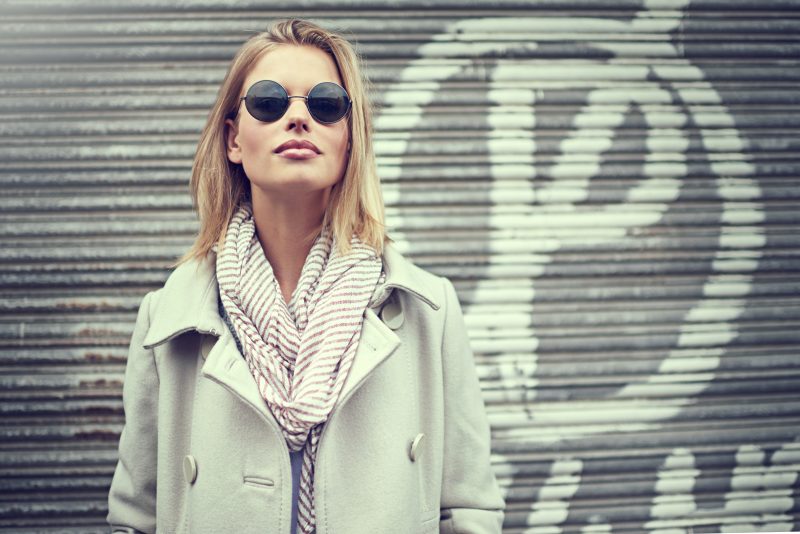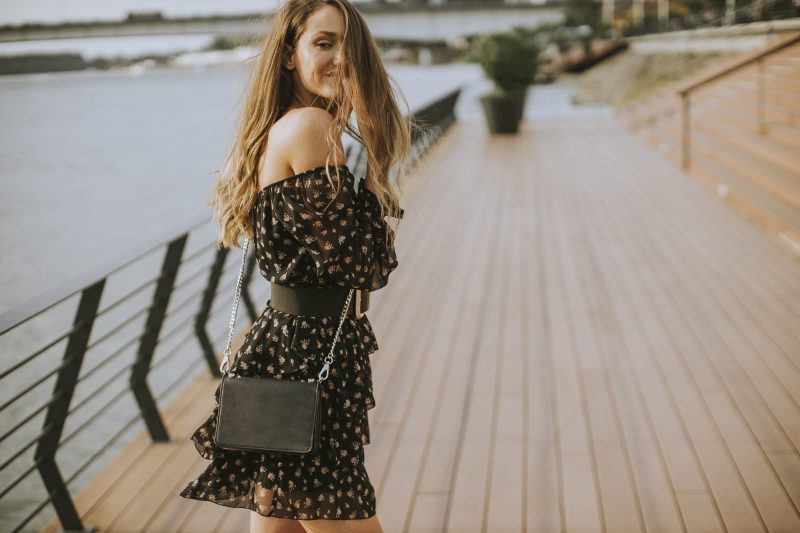The idea came to me during a particularly tense Christmas dinner back in Sheffield. My dad—Frank Bennett, 67, retired engineer, dedicated gardener, and possessor of Opinions About Everything—was doing his traditional critique of my outfit. “What’s that supposed to be?” he asked, gesturing at my vintage Comme des Garçons jacket that I’d found after months of eBay stalking. “Looks like summat the charity shop would turn down.” My mum shot him The Look (you know the one—it translates roughly to “we’ve talked about this, Frank”) while I rolled my eyes so hard I nearly saw my own brain.
“It’s designer, Dad,” I sighed, reaching for more roast potatoes. “It cost more than your car.”
This was, admittedly, an exaggeration. His ten-year-old Skoda is worth marginally more than the jacket, but the point stands. My dad snorted in that particularly Northern way that somehow conveys both amusement and disapproval simultaneously.
“Designer? Looks like someone’s had a run-in with a lawnmower and then charged you for the privilege. Highway robbery, that. I could dress you better with £50 at Marks & Spencer.”
And that’s when it hit me. The column idea. The experiment. The thing that would either end in triumph or with me never being able to show my face in the fashion industry again:
What if I let my Yorkshire dad style me for a week?

Not just advise me, mind you, but actually select my entire outfits. The man who thinks anything more expensive than M&S is “daylight robbery,” who still wears jumpers my mum bought him in the late 90s because “there’s nothing wrong with them,” and who genuinely doesn’t understand why anyone would own more than one coat. This man would be given complete control over what a fashion features director wears to industry events, work meetings, and social occasions for an entire week.
When I pitched the idea to him the next morning over bacon sandwiches, I expected resistance. What I got instead was a gleam in his eye that I found mildly terrifying.
“About time,” he said, putting down his mug of tea with a decisive thunk. “I’ll get my notebook.”
The fact that my dad felt he needed a notebook for this exercise should have been my first warning sign.
The rules were simple: Dad would choose my entire outfit each day for a week. I would wear whatever he selected without alteration, regardless of where I was going or who I was seeing. The only boundaries were that it had to be from my existing wardrobe (I wasn’t about to let him loose in shops with my credit card) and that it had to be weather-appropriate (I didn’t fancy catching pneumonia for the sake of content). Beyond that, Frank had free rein.
Day one dawned bright and clear, with a schedule that included a breakfast meeting with a PR from a luxury brand, followed by office work and then drinks with industry friends. A day that would normally see me in something like wide-leg trousers, a silk shirt, and statement earrings. Instead, I found myself standing in front of my dad as he rummaged through my open wardrobe with the focused determination of someone defusing a bomb.
“Right,” he said after what felt like approximately seven years. “These jeans. The blue ones that actually look like jeans, not the ones with all the holes. This jumper—the red one. And these shoes.” He pointed at my most sensible flat boots, the ones I wear for dog walks and festivals. “Coat if you need one, but not that daft thing that looks like a sleeping bag.”
I looked at the outfit laid out on my bed. Straight-leg Levi’s 501s that I normally wear for weekend errands. A plain red merino sweater from Uniqlo that I’d bought for a skiing holiday and rarely worn since. And my flat ankle boots that, while perfectly nice, weren’t exactly fashion-forward. It was the outfit equivalent of a solid, reliable hatchback—perfectly functional, utterly unremarkable.
“Dad,” I started, “I’ve got a meeting with Prada this morning.”
He looked completely unfazed. “And? You’ll look smart. Clean. Tidy. What more do they want?”
What indeed. I dutifully put on the outfit, resisting the urge to jazz it up with accessories or different shoes. Rules were rules. The only concession I made was to add my usual makeup, as we hadn’t discussed beauty and I wasn’t prepared to go bare-faced to meet the Prada PR team.
Looking in the mirror, I was surprised. I didn’t look bad. I didn’t look particularly fashion-forward or interesting, but I looked… fine. Normal. Like a regular person who had put on clothes rather than constructed an Outfit. The jeans fit well (Dad had at least chosen my best-fitting pair), the jumper was a good color for my complexion, and the boots were comfortable. It was all just so sensible.
The Prada meeting went fine, though Eliza—their PR who normally compliments whatever avant-garde earrings or interesting vintage piece I’m wearing—seemed slightly confused by my sudden pivot to normcore. “You look… comfortable,” she said, in the tone of someone who isn’t sure if they’re delivering a compliment or an insult.
Back at home that evening, I debriefed with Dad, who was staying with us for the week to fully commit to his new role as stylist.
“So?” he asked, looking up from his crossword. “Did the fashion police arrest you?”
“No,” I admitted. “But I didn’t exactly stand out either.”
He snorted. “Standing out’s overrated. Looking decent, that’s what matters.”
Day two was similar—Dad selected straight-leg black trousers (“proper ones, not those ridiculous wide things that make you look like you’re wearing a skirt”), a navy blue cashmere jumper that was actually one of my more expensive pieces (“at least this one looks like it’s worth what you paid for it”), and the same boots as yesterday (“they worked, didn’t they?”).
It was all very… coherent. Coordinated. The kind of outfit that wouldn’t raise eyebrows anywhere from a parent-teacher meeting to a casual restaurant. It was also, I had to admit, comfortable and practical for a day that involved running around London to various appointments in the rain. By the end of the day, while my colleagues were complaining about wet hems on their wide-leg trousers and soggy suede shoes, I was suspiciously dry and comfortable.
“See?” said Dad that evening, looking annoyingly smug. “Practical doesn’t have to mean looking a mess. Your grandmother would never have left the house without looking presentable, and she managed just fine without spending thousands on jackets with holes in.”
By day three, I was starting to get concerned that this experiment might not be as amusingly disastrous as I’d hoped. I had a relatively important industry dinner that evening, the kind of event where people definitely notice what you’re wearing. Surely this would be where Dad’s styling would fall short?
After much deliberation and some muttering about “emperor’s new clothes” and “more money than sense,” he selected a simple black dress from my wardrobe—a well-cut midi with long sleeves that I’d actually forgotten I owned.
“This,” he said definitively. “With the black shoes with the chunky heel, not the silly spiky ones. And if you must have jewelry, that gold necklace your mum got you for your 30th, not those chandelier things you usually wear.”
The result was… annoyingly good. The dress, which I’d overlooked for years as too simple, was actually beautifully cut and skimmed over my figure in a flattering way. The block-heeled shoes were comfortable enough that I wasn’t doing the usual cocktail-reception shuffle of weight from foot to foot. And my mum’s gift—a simple gold chain with a small pearl pendant—added just enough interest without overwhelming the clean lines of the dress.
At the dinner, I received several compliments, including one from the fashion director of a major magazine who wanted to know where the dress was from. When I admitted it was actually an old COS purchase that had been languishing in my wardrobe for years, she nodded approvingly. “I thought it might be The Row,” she said, naming a brand whose dresses typically cost upwards of £1,500. “It has that beautiful simplicity.”
I texted this feedback to my dad, who replied with a single thumbs-up emoji, which from him might as well have been a victory lap around the garden.
Day four was a Saturday, which in my world usually means either very casual clothes for running errands or something more experimental for brunches and gallery visits with friends. Dad, unsurprisingly, leaned toward the former, selecting straight-leg jeans again (he seemed to have decided that all other trouser shapes were an affront to common sense), a Breton striped top that I’d had for years, and a navy blazer that actually was from The Row, though I didn’t mention this fact to him.
“Smart casual,” he announced, looking pleased with himself. “Ready for anything.”
And he wasn’t wrong. The outfit worked for both the farmers’ market in the morning and impromptu drinks with friends in the afternoon. It was the kind of outfit that French women supposedly live in—simple, classic pieces in a coordinated color palette. I even received a compliment from my notoriously stylish friend Imani, who assumed I was doing some kind of “back to basics” fashion cleanse.
By day five, I was starting to wonder if my dad had secretly been studying fashion magazines when I wasn’t looking. His selections were consistently good—not innovative or boundary-pushing, but solid, flattering, and well-coordinated. He had an unerring eye for what actually fit me well versus what I sometimes wore because it was interesting or on-trend despite not being particularly flattering.
This day’s outfit for Sunday lunch with friends was a dark green A-line skirt I’d forgotten I owned, paired with a cream silk blouse and the same ankle boots he’d selected on day one. It was the kind of outfit that wouldn’t turn heads but also wouldn’t ever look out of place or inappropriate. The perfect embodiment of his fashion philosophy: looking “presentable” should be the goal, not looking “different for the sake of it.”
Day six brought my first major work challenge of the experiment—a photo shoot where I’d be meeting with a photographer and stylist to discuss an upcoming feature. This is exactly the kind of situation where fashion industry people tend to dress to impress each other, often in whatever’s most current or directional.
Dad selected wide-leg black trousers (his first deviation from straight-leg jeans, a breakthrough moment), a black turtleneck, and black loafers. Essentially, a fashion uniform that could have come straight from a 1990s Calvin Klein campaign or a current Phoebe Philo fan account. Simple, architectural, timeless.
“All black?” I questioned, surprised by the slight drama of this monochrome moment.
“You’re always saying that New York fashion people wear all black,” he shrugged. “Thought you might as well look the part.”
At the shoot, the stylist—a woman who regularly works with major fashion magazines and has a distinctly maximalist personal style involving multiple patterns and textures—looked me up and down approvingly.
“Very Helmut Lang,” she nodded, referring to the minimalist designer whose vintage pieces now sell for small fortunes on resale sites. “I’m kind of loving this palate cleanser moment you’re having.”
If only she knew that my “palate cleanser moment” was actually “my Yorkshire dad thinks fashion people are daft and has decided to prove a point.”
The final day of the experiment arrived, and I had mixed feelings. On one hand, I was looking forward to reclaiming my wardrobe and the creative expression that comes with selecting my own outfits. On the other hand, I’d spent a week receiving compliments, feeling comfortable, and never once having to change last-minute because something didn’t work or was impractical for the day ahead.
For this last day, Dad went back to basics: good jeans (straight-leg, naturally), a well-cut white shirt, and a navy cashmere cardigan that my mum had given me for Christmas. Leather loafers completed the look, which had distinct “off-duty French actress” energy despite being selected by a man who would definitely not know who Jeanne Damas is.
Over our final debrief dinner, I asked him what his approach had been—had he been secretly studying fashion rules or just going with his instinct?
“It’s not complicated, love,” he said, helping himself to more potatoes. “I just picked things that fit you properly, matched reasonably well, and didn’t look like they were trying too hard. Clothes should make you look good, not make people look at your clothes instead of you.”
There was something profound in this statement, a distillation of a fashion philosophy that stands in direct opposition to much of what drives the industry I work in. While I spend my professional life analyzing trends, celebrating innovative design, and often prioritizing the interesting over the flattering, my dad’s approach cut through all of that to something more fundamental: does it fit, does it flatter, does it serve its purpose?
Of course, I’m not about to abandon my more experimental fashion choices or suddenly stick to a capsule wardrobe of basics. The joy of self-expression through clothing is too fundamental to who I am, and frankly, I’d be terrible at my job if I only ever wore simple, classic pieces. But this week has been a surprisingly valuable reset, a reminder that underneath all the trend analysis and fashion theory, there’s something to be said for the simple satisfaction of wearing clothes that just work.

As an epilogue to this experiment, I did take Dad shopping the next day, curious to see what he’d select if given free rein in actual stores. We went to Liberty—partly because I wanted to see his reaction to the iconic building, and partly because I was intrigued to see how his sensibilities would translate when faced with designer options.
After about fifteen minutes of wandering around, looking increasingly baffled by the prices and occasionally muttering “how much?” in tones of genuine distress, he finally stopped at a display of simple cashmere jumpers in a rainbow of colors.
“Now these,” he said, feeling the sleeve of a forest green one, “are actually decent. Good material, simple shape, they’d last for years.
” He checked the price tag and winced. “Though you’d want them to last forever at that price.”
I bought him the green jumper as a thank you for his styling services. He protested vigorously, insisted it was ridiculous to spend that much, and then wore it to dinner that night, looking quietly pleased with himself.
“It’s a good color on you, Dad,” I told him. He adjusted the cuffs with surprising attention to detail.
“Presentation matters,” he replied with a small smile. “That’s what I’ve been telling you all week.”



